When I think of sweet tea thoughts of a refreshing sweet black tea like orange pekoe come to mind. In fact, sweet tea is so ingrained in American culture that it’s nearly impossible to think of the drink without thoughts of sweltering southern summers. However, as happens from time to time, our impressions of history, and how things to be are flat wrong.
Yes, tea was a popular drink in the American south since the colonial days, however, it was often served hot and reserved for the upper class due to its high price compared to coffee. The other problem was that ice was not easy to come by in the south. Iced sweet tea originated in the industrialized north where ice was more readily available. It wasn’t until the late 19th century when ice machines were developed that iced tea found its way south, and when it did, it wasn’t black tea as most of us think. Sweet Southern iced tea was traditionally Chinese green tea.
Okay, so maybe this isn’t a mind-blowing fact, but it might just be interesting enough to use at a conversation piece at your next soiree… or dinner date.

The story of green tea has moved from Chinese culture to English society and finally ended up in the American South. Now, it is celebrated for its many health benefits promoted by Celebes such as Jennifer Aniston and Johnny Depp, and is considered the fat burning drink of the 21st century contributing to yellow teeth everywhere.
Oops, did you catch that last part? Yes, green tea with all of its history and health benefits is also notoriously known for its impact on yellowing teeth and this is where you’ll find out why. But, before you learn the downside of drinking green tea, let’s take a look at why we just can’t get enough.
What is Green Tea?
Nearly 600,000 tons of green tea is consumed worldwide every year. Most of that is in China, but nearly half of Americans report drinking tea every day. Black and Oolong are still the teas of choice in the U.S., however green tea has seen considerable consumption in recent years due to two things: health benefits and it blends well with a lot of other flavors.
Coffee shops, tea houses, and smoothie, and health food stores have taken advantage of the health alternatives green tea offers, blending it with berries, sweeteners, herbs, and a host of other ingredients.
Green tea is made from Camellia sinensis leaves and buds that haven’t gone through the same drying and oxidation process used in making black and oolong teas. Because it hasn’t gone through this process, the tea maintains a degree of its subtle green color when steeped in hot water.
Served sweet, green tea is often mixed with other delicious flavors, served hot it can be refreshing on a cool day and pleasingly calming when you are feeling sick or need a mental pause.
Health Benefits of Green Tea
So, whether it is a calming feel or a fun afternoon beverage, Americans cite over and over that they love green tea because of its health benefits, and as opposed to other American health fads, green tea is also steeped in science-based evidence. Green tea is actually touted as one of the healthiest drinks in the world – aside from the impact on your teeth which we’ll get into shortly.
Here are just a few of the benefits green tea has on your body and your mind:
- Green Tea has bioactive compounds: I feel all sciency when I say bioactive compounds. So, what are they? Bioactive compounds are chemicals in plants and other foods like fruits, vegetables, nuts, and oils that promote good health. The bioactive compounds in green tea include polyphenols that reduce inflammation and helps fight cancer and catechin which helps prevent cell damage.
- Helps with brain function: If you are someone who is into Nootropics (drugs and supplements that help improve cognitive function, creativity, motivation, and brain health) then green tea may be your perfect go-to. Green tea contains two of the most basic nootropics in caffeine which is a stimulant, and L-Theanine which has dopamine and anti-anxiety effects. When L-Theanine and caffeine are taken together you get a feeling of stimulation from the caffeine where L-Theanine’s anti-anxiety effects reduces the negative effects of caffeine such as becoming jittery.

- Increases fat burning: Well, there you go. Now you know why Hollywood is obsessed with green tea. No one knows for sure why green tea contributes to fat burning, however, caffeine and a boost to metabolism currently rank high. Small group studies with a placebo show that adding green tea to a person’s diet may increase daily fat-burning anywhere from 4% to 17%.
- Contains cancer-fighting antioxidants: Breast cancer, prostate cancer, and colorectal cancer have all been studied in relation to green tea consumption and the lower risk of developing these cancers when drinking green tea.
- May protect your brain from aging: To be fair, your brain is going to age. By your forties you are probably already feeling a little brain fog as in what did I eat last night for dinner and where the heck did I put my keys? Despite these brain fog events green tea may actually help protect your brain from serious aging issues such as Alzheimer’s and Parkinson’s disease. The contributing factors seem to be those bioactive compounds, more specifically catechin which has a positive impact on neurons and lowering the risks of dementia.
- Reduces bad breath: Considering all the things that reportedly cause foul mouth smells, this is a breath of fresh air. Again, it is the catechins that are reported to suppress the growth of bacteria, especially Streptococcus mutans which cause plaque in your mouth and can eventually lead to cavities and tooth decay.
Diabetes, cardiovascular disease, and even longevity are all being researched and showing positive signs of green tea’s health benefits. So, does green tea have any negative aspects? Well, yes and to Americans, it is a big one. Green tea can stain your teeth.

How Does Green Tea Stain Your Teeth?
Whether you knew it before, or we just introduced you to the benefits of green tea it is easy to imagine this world-famous beverage is your go-to when you’re feeling sick, need a pick-me-up, or just need to relax. Enjoyed in moderation, green tea has amazing benefits. However, as the U.S. population transitions from their coffee addiction to green tea people are finding a negative impact. Green tea is worse on your teeth than coffee.
To be clear, most teas will stain your teeth and it’s not uncommon for people to believe green tea has no impact on yellowing due to its light color. But, much like clear colored teeth-staining sodas, green tea can yellow your teeth like the best of them.
Do you remember when we mentioned that green tea is processed differently than black teas? Well, the processing, or lack of processing is what contributes to teeth staining and why green tea is more likely to yellow your teeth than black tea. Doesn’t seem right, does it? Well, green tea contains compounds called tannins that increase staining potential. You’ve heard of tannins before when it comes to red wine.
Tannins are acidic which also means they can do a number on your tooth’s enamel eating away and damaging the outer protective layer of your teeth. Once damaged, your tooth’s inner surfaces are more porous than the enamel and the tiny pigments in green tea and other drinks can then easily bleed into your teeth and lead to yellowing and staining that we spend countless hours trying to avoid.
Green Tea Compared to Other Teeth-Staining Beverages
Green tea is far from the only popular beverage that causes your teeth to stain. In fact, unless you just drink water there is a good chance that your beverage of choice has some impact on your teeth and discoloration.
The biggest culprit we have in America is likely soda consumption. Even with a decrease in drinking pop in the last couple of years, Americans are still obsessive over our soda intake. And whether you drink colas, citrus sodas, or other variant, the mix of sugar and acids hit your teeth hard.
Additionally, wine (especially red), coffee, and of course tea all have staining properties due to acids and tannins.
Green tea sits somewhere in the middle when it comes to teeth staining. On the top of the list is soda which has multiple negative layers that can impact your teeth. Soda has both natural acids and sugars that can create acids that break down the enamel. Additionally, the sugars can contribute to bacterial growth, and pigments increase staining.
Wine, like tea and coffee, has acid and tannins. When it comes to wine compared to coffee and tea, wine is more acidic and red wine has deeper pigments. However, when you compare coffee and green tea, green tea is more acidic and has more tannins.
Green tea, while notorious for yellowing of teeth isn’t the worst beverage to consume, but it is also not the best as it rests somewhere above coffee and white wine, and below red wine and soda.
The one consideration in favor of green tea as your beverage of choice is that its health benefits outweigh nearly every beverage out there, including the hydrating King – water. So, how can you comfortably drink your tea and maintain a glowing smile? You have options.

Staining Prevention
Green tea has all of these great benefits, but when you look in the mirror all you can see is that nasty yellowing. The good news is that there are preventive treatments to keep your teeth looking great.
First, we’ll start with how you drink your tea.
- Avoid drinking sugary green tea: Yep, if you’re a historical traditionalist and want to drink sweet iced green tea, this may be a problem. Though, its also important to note that it wasn’t until modern times that sweet tea was noted as southern sweet tea. Added sugar has always been a personal preference rather than cultural.
- Add milk to your tea: Milk is great due to its protein and calcium content, but adding it to green tea can also minimize some of the damage done to your teeth by reducing the contact of acids and tannins on your teeth and gums.
- Drink tea with a straw: Reserved more for drinking teas cold, drinking beverages with tea reduces the contact of green tea on your teeth. The same goes for soda and even wine.
- Steep your tea for a shorter time: The less your tea steeps in hot water the less pigment that will contribute to staining.
- Drink water after tea: Drinking water helps to dilute the acids and tannins in your mouth from tea consumption and wash them down.
The next step in prevention is good oral care. When it comes to toothpaste and mouthwash you have a lot of choices including enamel restoration, teeth whitening, and non-alcohol mouthwash. The important thing when it comes to oral care though is ensuring that you are brushing your teeth at least twice a day, flossing, and using a mouth rinse whether it is mouthwash or plain water.
Brushing helps to scrub teeth and gums allowing for food, bacteria, and sugars, to be washed down. Flossing can also remove stubborn foods caught between your teeth, but also helps to create natural spacing of your teeth which helps to protect your tooth’s enamel while chewing. Mouth rinses can help wash away and kill bacteria caught in your gums and along the surface of your teeth.

Managing Teeth Stains that Already Exist
Okay, good oral care. Yeah, we all know what we’re supposed to do. You’ve seen the commercials, you’ve been to the dentist, and your kindergarten teacher terrified you with voluminous pictures of cavities and gum disease. But, what do you do when you already have stained or yellow teeth? You can try teeth whitening toothpaste, but they only go so far. You can also try dental restoration such as veneers and crowns, but those are cost prohibitive unless you have actual tooth damage. Professional teeth whiteners such as your dentist can also be costly.
The SNOW Teeth Whitening Kit is a safe and effective way to whiten all of the teeth in your mouth and works on any type of teeth – yes, including sensitive teeth. It’s also safe to use on braces, bridges, caps crowns, and veneers. The SNOW brand has never been tested on animals and is a safe and effective way to painlessly whiten your teeth and perk up your lovely smile without breaking your wallet.

















































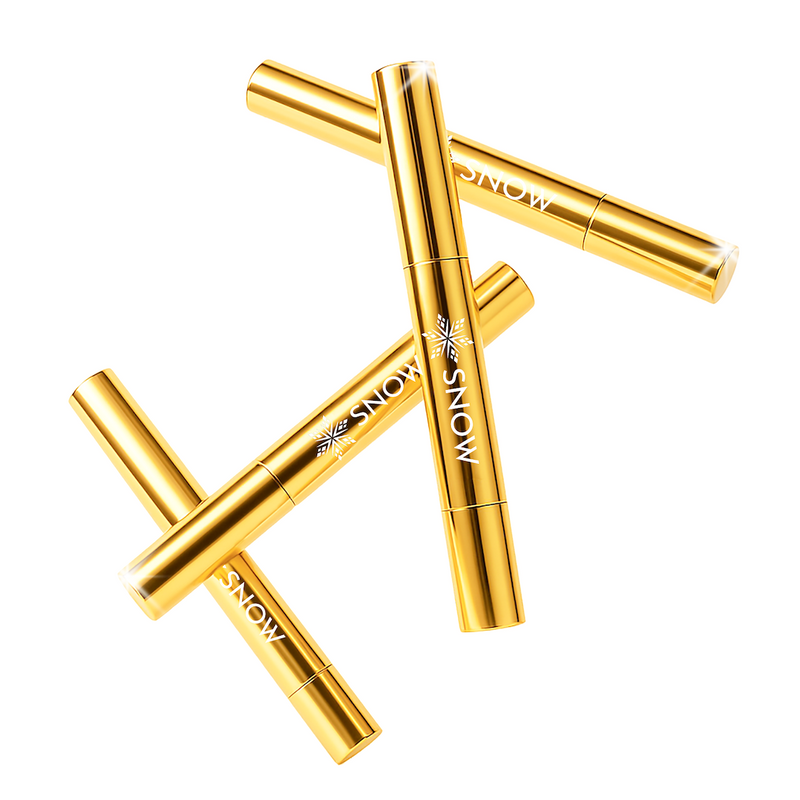

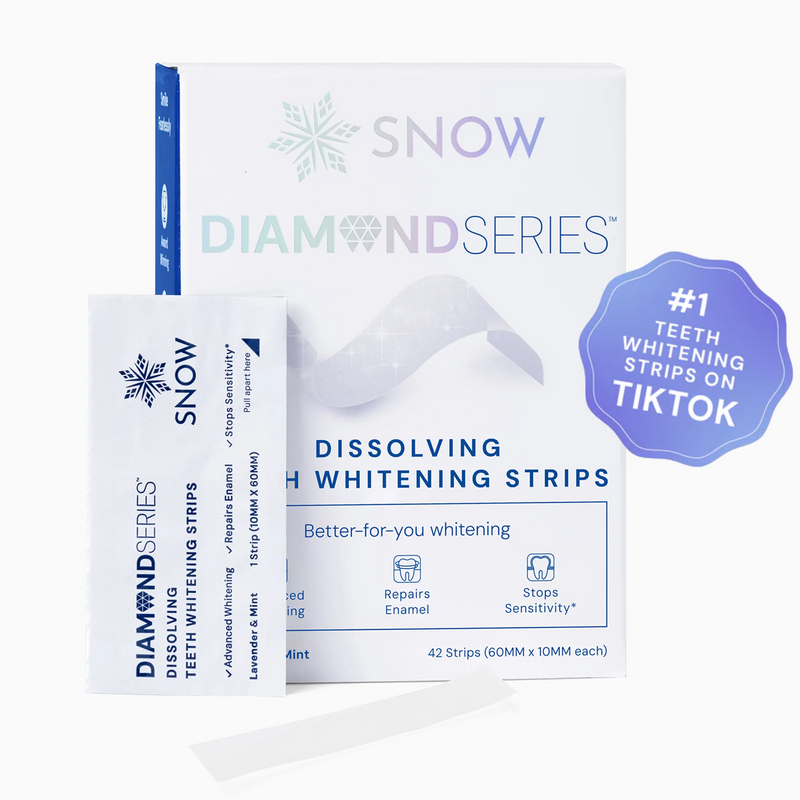

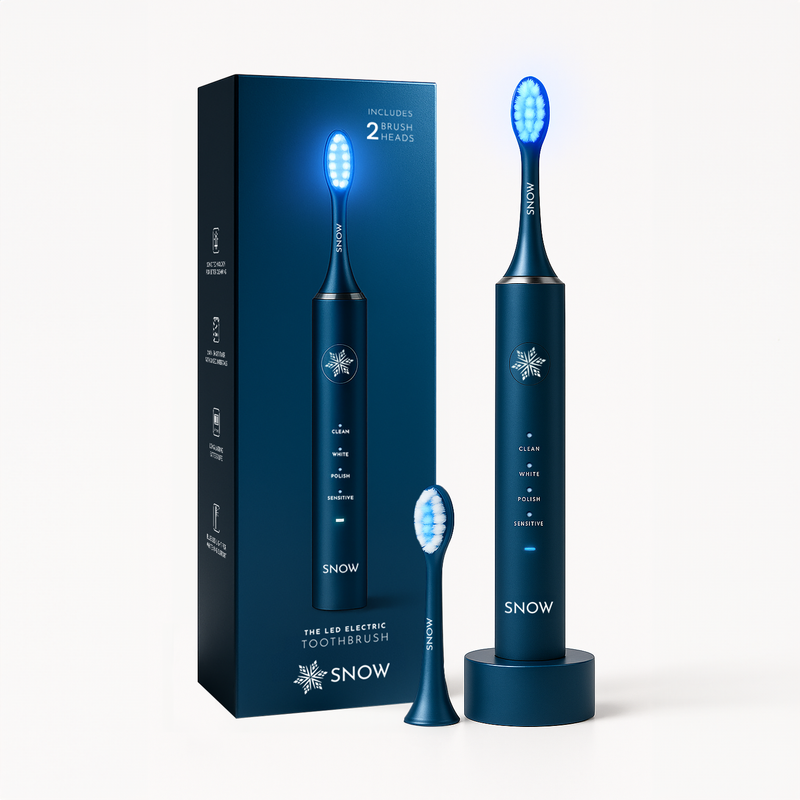

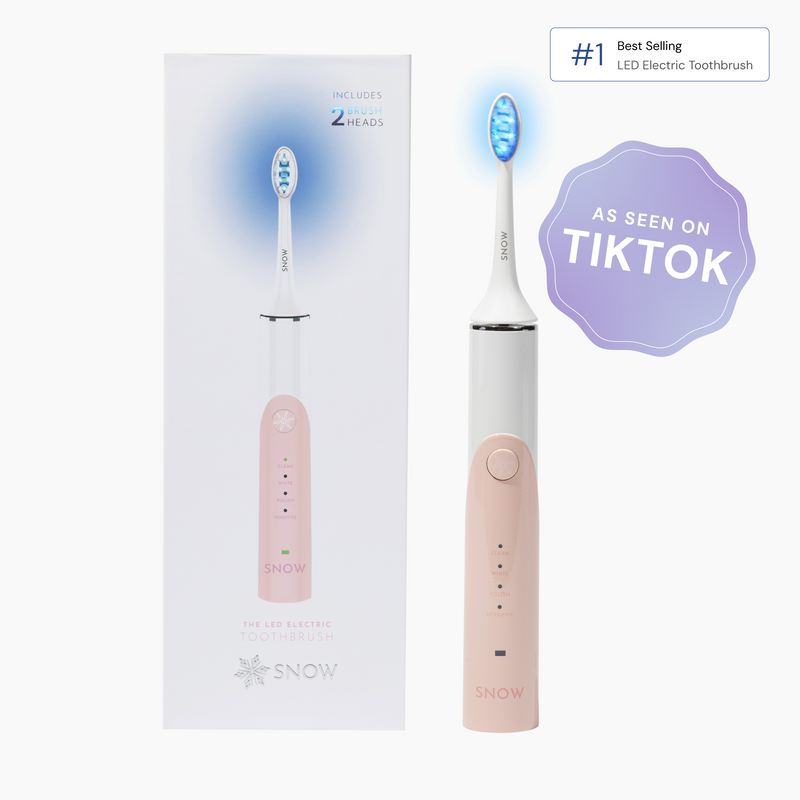




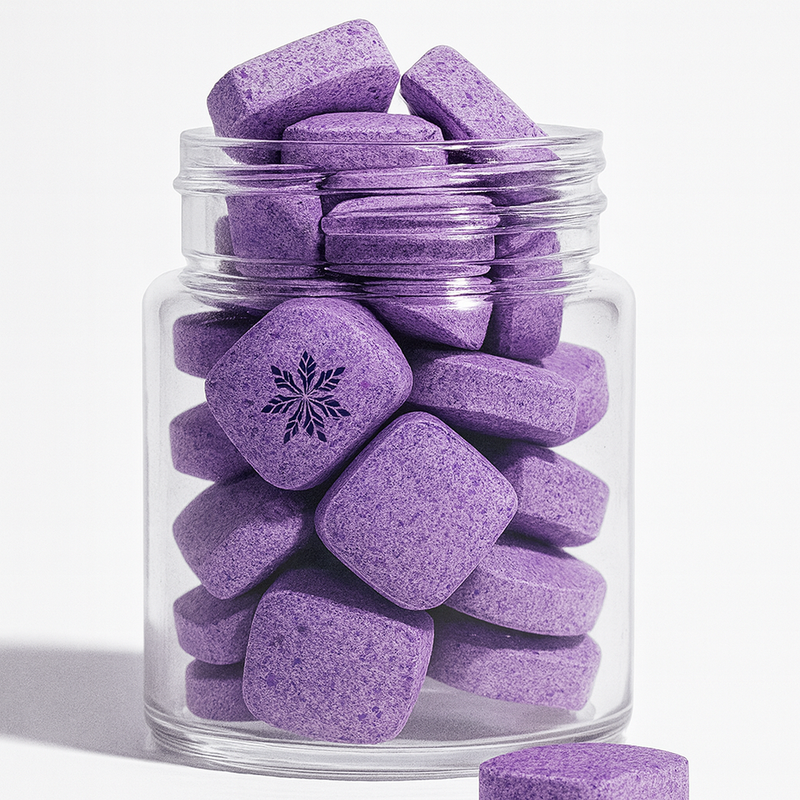
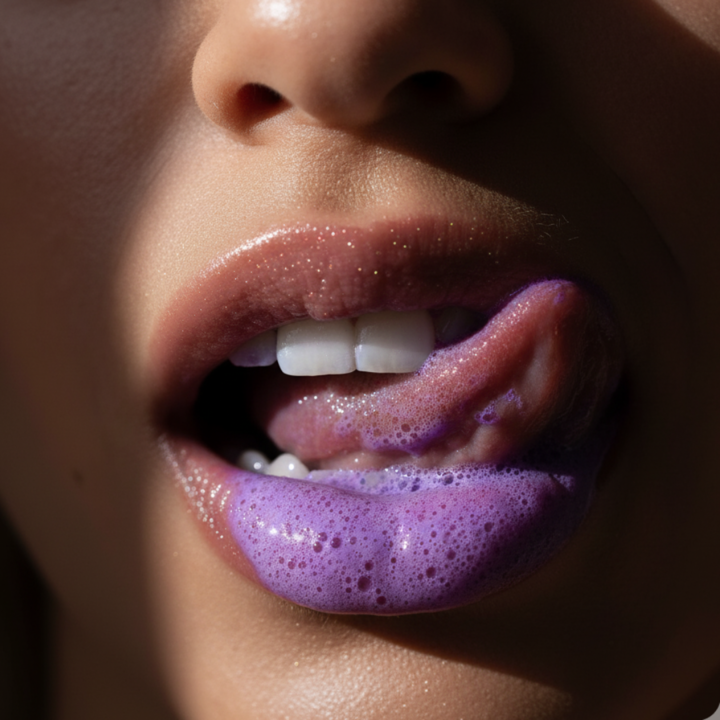






![Is It Safe to Use Whitening Toothpaste Everyday? [The Real Answer]](http://snow-teeth-whitening.myshopify.com/cdn/shop/articles/is_it_safe_to_use_whitening_toothpaste_everyday.png?v=1759931228)


